Some celebrity deaths can feel like losing a family member. Whether they’re completely out of the blue—like the sudden loss of Brittany Murphy—or expected but unwelcomed—like Betty White’s peaceful passing—it hurts just the same.
Heath Ledger’s death hit hard. Fans, friends, and casual film-goers alike mourned the loss of such a profound talent.
Ledger had a remarkable grasp on the craft of acting, seamlessly moving from genre to genre like a chameleon. When comparing his work in films like 10 Things I Hate About You, Lords of Dogtown, and Brokeback Mountain, it’s nearly impossible to believe that his characters are all portrayed by the same man.
 A chameleon actor, Heath Ledger portrayed several major roles, including Patrick Verona in 10 Things I Hate About You and Ennis Del Mar in Brokeback Mountain, throughout his career (Credit: Jen Lowery / Startraksphoto)
A chameleon actor, Heath Ledger portrayed several major roles, including Patrick Verona in 10 Things I Hate About You and Ennis Del Mar in Brokeback Mountain, throughout his career (Credit: Jen Lowery / Startraksphoto)
An artist through and through, Heath Ledger was a talented photographer, documenting his day-to-day life through 35mm film. When he developed the film, he would paint over each photograph with heavy markers, pigments, and nail polish, creating one-of-a-kind art, which you can see in Vanity Fair.
Ledger also displayed his love for film as a director and producer, working on music videos like Modest Mouse’s “King Rat” and N’fa Jones’ “Cause An Effect,” the latter of which was shot in Heath Ledger’s garage.
Heath Ledger was also known to be a keen chess enthusiast, playing ranked tournaments as a child and taking part in matches with fellow players in Manhattan’s Washington Square Park.
 Heath Ledger was also a talented photographer, a director and producer, and a chess enthusiast (Credit: Humberto Carreno / Startraksphoto)
Heath Ledger was also a talented photographer, a director and producer, and a chess enthusiast (Credit: Humberto Carreno / Startraksphoto)
He should have been turning 44 this year, but instead, we have to remember his legacy through his work.
Heath Ledger’s final two films, The Dark Knight and The Imaginarium of Doctor Parnassus, both of which were released posthumously, are considered some of the actor’s finest work. Today, we’ll reflect on these two films and how the casts pulled together after Ledger’s death to honor him.
The Dark Knight (2008)
Many men have portrayed the Joker since Batman first hit the big screen—Cesar Romero, Jack Nicholson, Mark Hamill, and later, Jared Leto—but Heath Ledger’s performance as the Clown Prince of Crime is one of the most critically praised renditions.
Ledger was just 27 years old when he first donned the Joker’s recognizable clown makeup for The Dark Knight, but his performance echoed a man much older and more deranged.

Perhaps it was director Christopher Nolan’s careful juxtaposition of the droll, crime-ridden city of Gotham alongside the ultra-organized Batman (Christian Bale) himself.
In a landscape that seems both dark and familiar, Heath Ledger’s Joker is far more sinister than previous iterations of the character.
In The Dark Knight, the Joker is not a somewhat silly villain that cracks corny jokes but rather a wicked man gone completely mad, the only one laughing at his own grotesque and violent stunts.
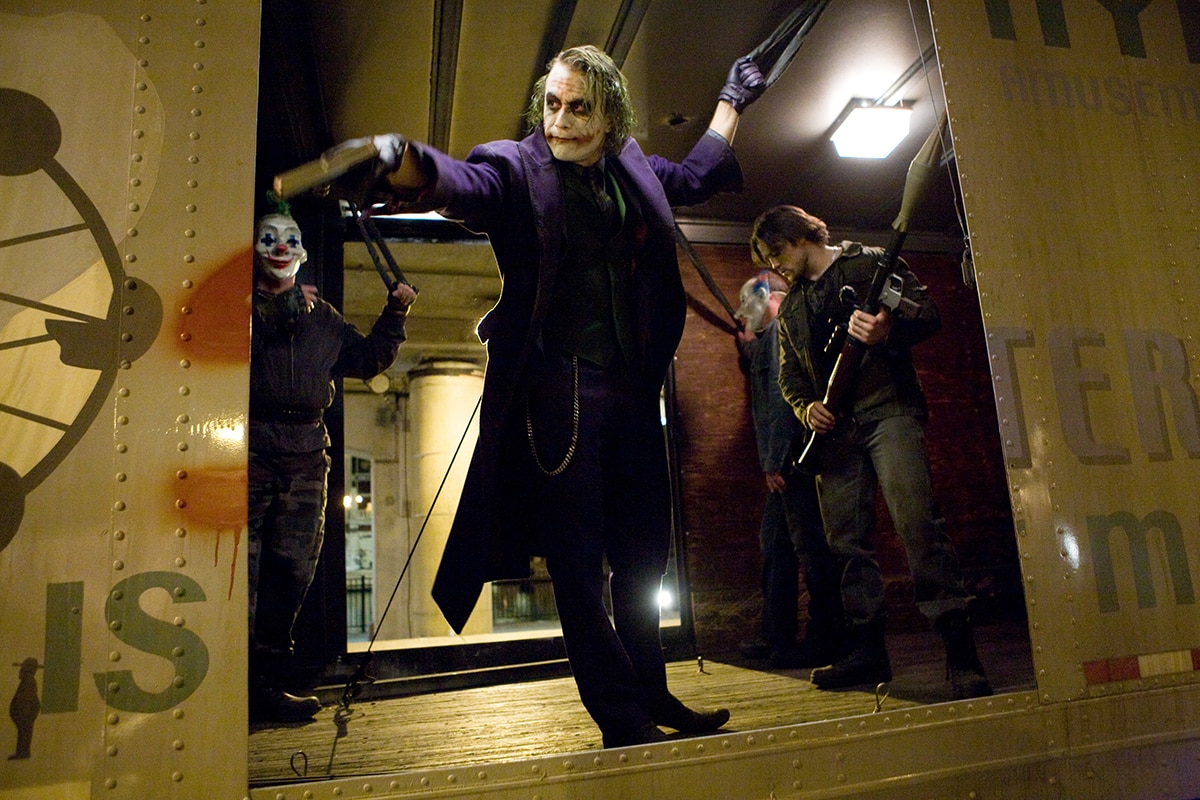
Fans were looking forward to seeing Heath Ledger in the role, and critics were abuzz about The Dark Knight’s upcoming debut. However, the actor passed away from an accidental overdose on January 22, 2008, just months before the film was set to be released.
Ledger’s death created even more buzz around the film, and The Dark Knight was released in July 2008 to box office record numbers of ticket sales.
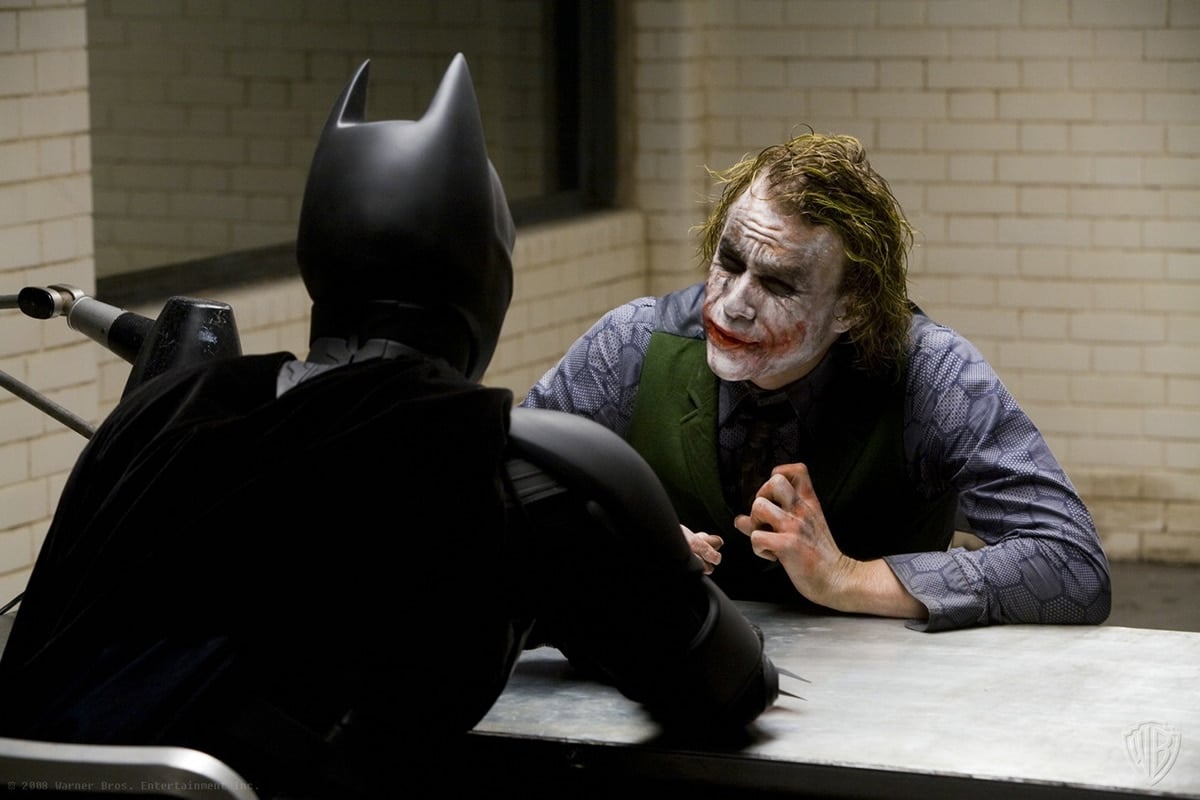
The Dark Knight received rave reviews from viewers and critics alike, due in no small part to Heath Ledger’s Joker. Though he was not there to receive it, the actor was posthumously awarded the 2009 Academy Award for Best Supporting Actor for his role.
Critics have wondered if Heath Ledger was able to harness energy from his own life in order to portray such an unsettling version of the Joker.
A strung-out villain, seemingly acting out of both impulse and calculated malice, one wonders if Ledger’s own substance abuse issues informed his on-screen performance.
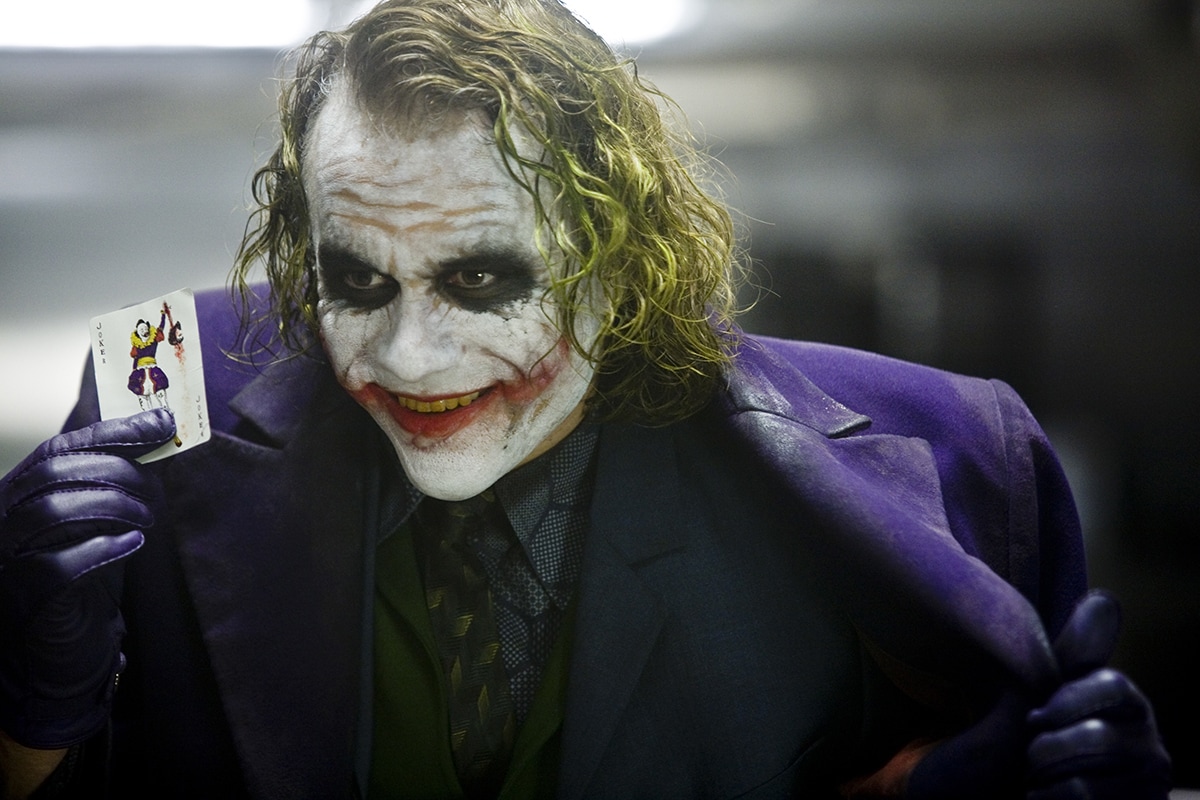
The Imaginarium of Doctor Parnassus (2009)
Though Heath Ledger was a genre-bending actor, The Imaginarium of Doctor Parnassus is a whimsical film unlike any he had ever done before.
The story follows a nomadic group of actors that invite their audience members through a magical mirror, called the Imaginarium, which allows them to enter their own imaginations.
Unbeknownst to them, they are faced with a choice within the world of the mirror: pursue enlightenment or remain selfish. Those who choose their vices unwittingly are taken as victims of the Devil.
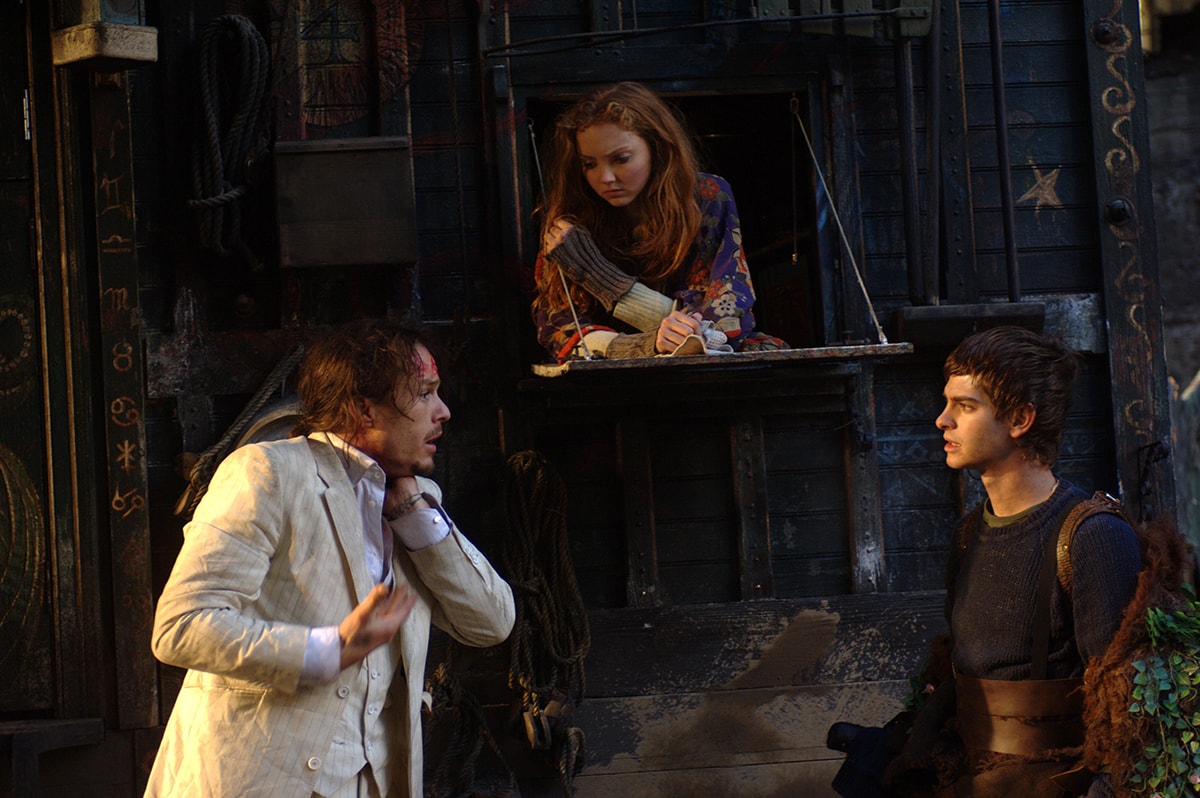
The Imaginarium of Doctor Parnassus had a stacked cast featuring the likes of Heath Ledger, Christopher Plummer, Andrew Garfield, Verne Troyer, Lily Cole, and Tom Waits.
The film was somewhat of a long shot, as film executives didn’t expect such a wacky tale to be a hit. However, they were persuaded by Heath Ledger’s involvement, as showrunners claimed that he was a “key factor” behind the studio’s funding.
Unfortunately, Heath Ledger died only a third into production.
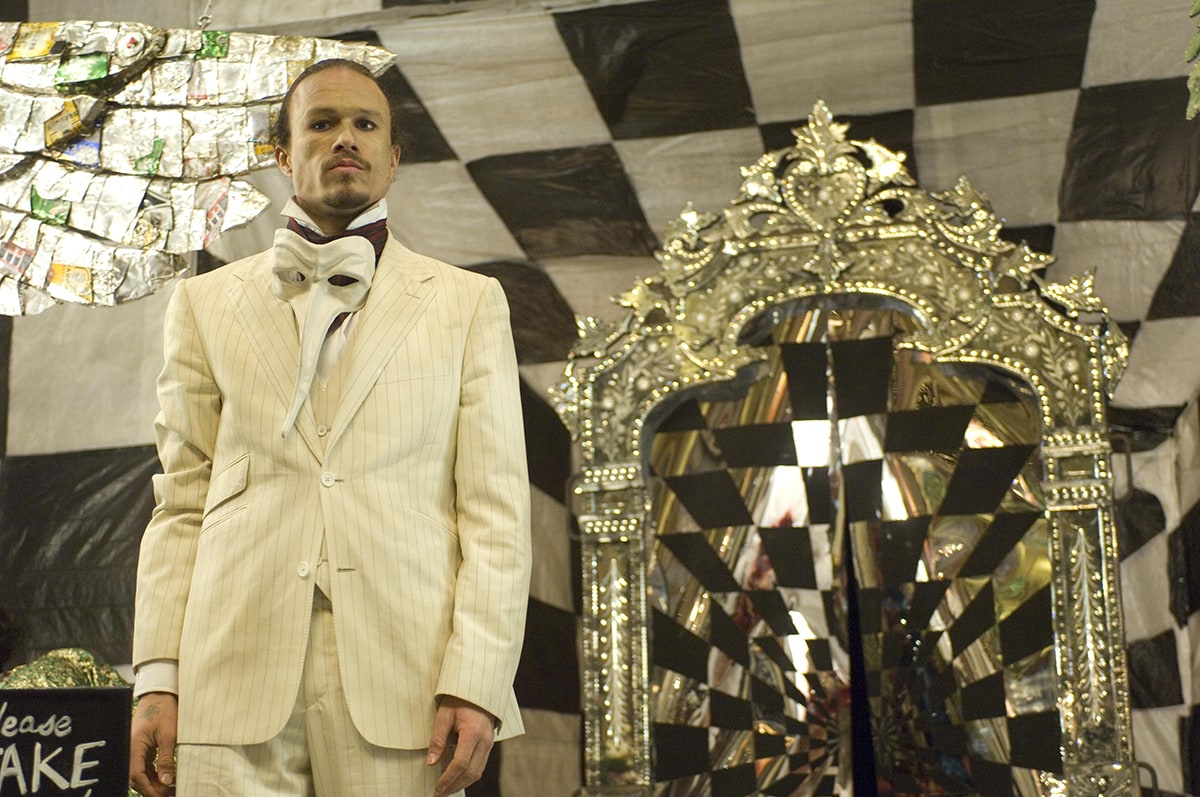
Not only was the cast bereft at the loss of their friend, director Terry Gillam believed Ledger’s untimely death to be a death knell for the film.
Production was suspended indefinitely, but Gillam tried to brainstorm how they could complete what would be Heath Ledger’s final performance.
Instead of scrapping the film entirely or attempting to use visual effects to create a computer-generated version of the actor, Terry Gillam had the idea to have actors Johnny Depp, Colin Farrell, and Jude Law fill in for the role.
Heath Ledger had filmed all of his character’s “real world”—outside of the imaginary mirror world—scenes, so Depp, Farrell, and Law would serve as Ledger’s character when transformed within the Imaginarium.

Johnny Depp, Colin Farrell, and Jude Law had all been friends with Heath Ledger, so the actors were happy to continue their loved one’s legacy.
This was important to director Terry Gillam, who later told CBS News, “I just wanted to keep this [in the family]—it’s as simple as that… There were people even offering to come and help, they didn’t know Heath. It had to be in the family somehow, I don’t know why; it was my attitude.”
The idea to have multiple actors fill in Heath Ledger’s stead worked remarkably well for the film, cementing the idea that the Imaginarium was a place of wonder. In one scene, a woman in the Imaginarium imagines Ledger’s character to be her ideal man, in which he morphs into Jude Law.

Each actor was honored to lighten the burden, as Depp told HitFix, “Though the circumstances of my involvement are extremely heart-rending and unbelievably sad, I feel privileged to have been asked aboard to stand in on behalf of dear Heath.”
“To help Terry finish his film was an honor paid to a man I adore,” Law added. “I had a great time on the job. Though we were all there in remembrance, Heath’s heart pushed us with great lightness to the finish.”
“A community of people, caterers and actors, electricians and makeup artists had been brought together in a recognized sense of love and obligation, for and to, one of cinema’s finest actors and most generous of men,” Farrell said in a statement. “It will be this sense of love amidst the sadness I will remember most. Such a gift and an honor, from Heath, to be a part of the trail that he left behind.”
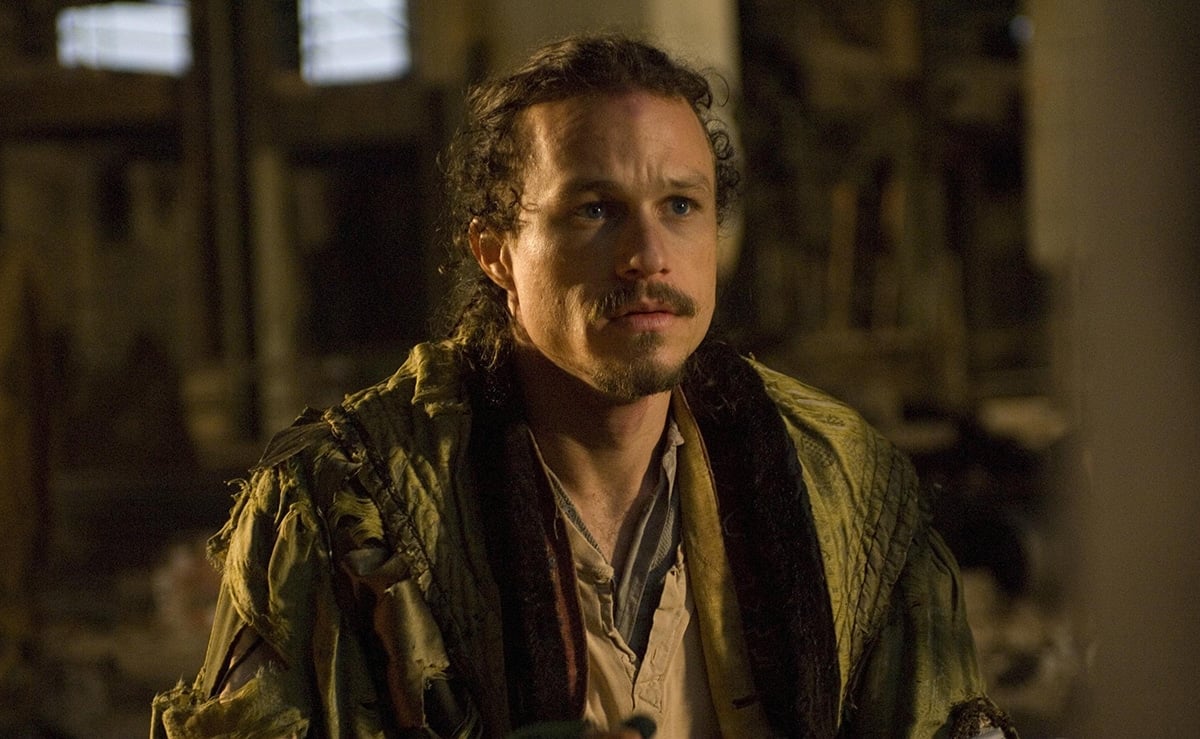
The Imaginarium of Doctor Parnassus was released in 2009, a year after Ledger’s death. Though it was not the box office hit The Dark Knight was, it was a heartfelt love letter to the late actor.
When asked if it was fitting that The Imaginarium of Doctor Parnassus was Heath Ledger’s last film, rather than The Dark Knight, director Terry Gillam told CNN, “There’s no fitting to be the last film of anybody. People go on about Joker because it was a wonderful performance. It was a spectacular performance. It’s a showstopper. What you’re seeing here is more Heath than in any other film. The real Heath.”
